- Policy
- Posted
Thinking Caps

Much of the debate on reducing international carbon emissions has focused on the extra cost of making the necessary cuts to slow the onset of climate change. According to Richard Douthwaite, the Irish Government is considering introducing Cap and Share, a system which would actually earn ordinary Irish people money for reducing emissions.
The Greens joined the government and accepted the painful compromises that went with it largely to do one thing – to get Ireland to respond to climate change. The party's leader, John Gormley, is on record as saying that they could not afford to wait another five years to get another chance to do something about the greatest problem facing humanity. Action was needed now.
The Programme for Government agreed between the Greens and Fianna Fáil accordingly includes a commitment to establish a carbon emissions budget and to reduce Irish CO2 emissions by 3% each year. These are not mere aspirations. Green TDs know that the idealists will abandon the party and that it will face electoral annhilation if they fail to deliver on at least this part of the programme and, since becoming Minister for the Environment, Gormley has confirmed that this December's budget will include the carbon component. This will involve him following the Minister for Finance's speech with a speech of his own in which he will outline Ireland's use of energy in the preceding year, the progress made in meeting emissions reduction targets and how the government plans to cut emissions by 3% during 2008.
Reduced emissions mean reduced fossil energy use and this will have massive consequences on the way we all live. Despite this, however, there has been no public discussion of what those consequences might be or of the ways in which the reduction might be achieved. Why is that? Is it that since we don't believe that the cuts will actually happen we feel that we need not worry about them?
The important thing about adopting a carbon budget and promising 3% reductions is that both have to be totally believeable if they are going to work. This is because it's only if we are absolutely convinced that, come hell or high water, the government will reduce fossil fuel use by a fixed amount each year for at least ten years that we will begin to take crucial decisions based on this conviction. Otherwise, decisions like what sort of projects we should design and build, where we should invest our savings, where we should live and what sort car we should buy will be based on our experience of life to date, a period in which emissions increased year by year.
My belief is that on Wednesday, December 5th, Minister Gormley will announce that during the course of 2008, Ireland will become the first country in the world to control all its CO2 emissions apart from those from agriculture. He will explain that two systems will be used to achieve this result. One will be the EU's existing Emissions Trading System, (EU ETS) which already covers emissions from big polluters such as the ESB and the cement companies. The remaining emissions - such as those from burning transport fuels and domestic heating oil - will come under a new system called Cap and Share (C&S) which - like the plastic bag tax and the smoking ban - Ireland will pioneer.
Cap and Share is a version of the well-known cap and trade approach to controlling emissions. If it is adopted here, emissions in 2008 might well be capped at their level in 2006, and the tonnage involved shared out equally amongst everyone living in the country. Some time during the year, we would each receive a booklet through the post containing certificates conveying our share for the next twelve months, perhaps in four quarterly instalments. And, in each subsequent year, the total tonnage of CO2 we were allocated would be at least 3% lower than the year before.
When we received our annual share, we would have a choice. We would be able to take that quarter's certificate to a bank or post office and, after proving we were the person named on it, sell it for cash at whatever was the market price on the day we took it in, just as if it was foreign exchange. Alternatively, we could destroy the certificate, thus reducing the country's emissions by whatever tonnage the certificate conveyed.

Minister for Finance Brian Cowen’s next budget announcement will be followed by Minister Gormley outlining the progress made in reducing national carbon dioxide emissions
The banks and the post offices which bought our certificates would consolidate them and sell the tonnage they represented to firms either bringing fossil fuels into the country or producing them here. The firms would need them because whenever, for example, a shipment of motor fuel arrived for Texaco, the company would not only have to pay over the excise duty due on it to Customs and Excise, it would also have to pay Customs enough emissions tonnage to cover the CO2 that the amount of fuel involved would release when burned.
The beauty of the C&S system is that the feedback is all the right way. The fossil fuel importers will naturally have to pass on the cost of buying the emissions permits when they set the price of their fuel and the higher prices will discourage its use. However, anyone using less fuel than the average – and most Irish residents do, since energy use is highly skewed in favour of the better off – will get more from the sale of their permits than the increase in their cost of living. The more frugal we are with energy, the better off we will be. The losers will be those doing a big mileage in big cars or living in large, draughty, overheated houses. Consequently, the majority opinion will always be in favour of making even bigger cuts as this will increase the value of the permits we are given to sell.
C&S has been devised over the past year by a group to which I belong within Feasta, a Dublin-based network of people trying to devise sustainable systems to replace the existing ones which are making our ways of living so unsustainable. "The important thing about C&S is that it is a rationing system but it is not each person's emissions that are being rationed" says Bruce Darrell, an architect who helped develop the approach. "Instead, it gives people the means to ration the system. They are able to say to it 'This is all the fossil energy we are going to let you use this year - find a way of working with that, and we will share the resulting costs and benefits. And remember, we're going to allow you less next year and the year after that."
If adopted, C&S would end the situation in which the government sponsors campaigns like The Power of One, which puts the responsibility for reducing energy demand and emissions on the individual, at the same time as it expands motorways and airports.
C&S challenges the system to change. “People don't like being told that they are the problem, that they are parasites. Most of them feel that they are being parasited upon” says Margaret Legum, a South African economist who is part of the Feasta group and is promoting C&S in that country.
Bruce Darrell explains: “C&S effectively removes the need for guilt as a method for trying to reducing emissions. If they can afford to do so, people will be free to emit as much CO2 as they like, but the cost of the limited emission certificates will rise accordingly, putting more money into the hands of those who make the effort to conserve. Once the cap is in place, there is maximum individual freedom."
Feasta also hopes that Gormley will say that, because the government believes that a non-party approach should be taken on the climate, he proposes that the Oireachtas should establish a Climate Protection Trust to implement C&S, with governors elected by the Dail and Senate rather than appointed by a minister. This would enable the trust to truly reflect the long-term interests of Ireland as a whole and take decisions on the basis of what is required for the climate rather than just for the economy. It is exactly the approach that Gordon Brown took with the Bank of England when he became Chancellor of the Exchequer ten years ago and made the Bank responsible for maintaining an inflation target. Making the Bank independent from political direction made it more credible that the target would be met.

We also think that he should announce that a carbon tax will be imposed on the fuels used by firms operating within the EU ETS. “These energy-users are getting their emissions permits free and yet are charging their customers the market value of the permits they actually use in the production process” says Emer O'Siochru, another architect in the Feasta group. “As a result, the ETS has boosted these firms' profits. A carbon tax on this windfall would claw some or all of that money back and allow it to be used to reduce, say, employers' PRSI contributions, thus making Irish firms more competitive.”
If this carbon tax was introduced alongside C&S, fossil fuel importers would either sell to ETS-registered firms, and would have to charge the tax, or to non-ETS customers, and would have to pay over the appropriate emissions tonnage. Administration should therefore be very simple and all fossil fuels would be controlled.
Is all this wishful thinking? Will C&S ever come about? I think it will. My evidence is that John Gormley is seriously considering the approach and that Comhar, the National Sustainability Council, advertised at the end of August for international consultants to report on the feasibility of introducing C&S in Ireland. A preliminary report should be available in time for Budget Day in December.
Besides, what other approach can the government use? A carbon tax by itself cannot guarantee that an annual emissions reduction target will be met because, in boom years, when demand for energy is strong, a very high tax rate would be needed to keep emissions within the agreed limit. Yet in years in which the economy was softer, a tax rate which was right for a boom would be excessive and would tend to force the country into a recession. In short, setting the right tax rate would be a political football, and IBEC, which doesn't like carbon taxes anyway, would always be saying the current rate was handicapping its member-companies. With C&S, on the other hand, the market would ensure that the price we got for our emissions permits was automatically adjusted to economic conditions. No-one would ever be able to say it was wrong. If the import price of fossil fuels went up, the price of the permits would fall to compensate.
True, in a boom, the prices of the permits might go excessively high and, since C&S is all about indicating the sort of long-term decisions people should make by providing them with clear signals, there is no point in allowing the price of a tonne of emissions to rise too sharply. Feasta has therefore suggested that a ceiling price should be set for each year and, if that ceiling was reached, the Climate Protection Trust should buy emissions tonnage from the ETS system to sell to fossil fuel importers. Similarly, if the economy was depressed and the price fell below whatever was set as the floor level in any year, the trust should buy tonnage from the financial intermediaries and cancel it.

Traders on the floor of the London-based International Petroleum Exchange, one of the main carbon trading venues under the EU Emissions Trading Scheme
Despite its benefits, there are bound to be political difficulties in introducing C&S since it involves abandoning the development path the country has taken over the past fifty years. This path was based on achieving higher labour productivity and thus higher incomes through the increased use of fossil fuel. The new path, by contrast, involves the use of progressively less fossil fuel. This will leave few aspects of life unchanged. Consequently, if the Greens are to get Fianna Fail and the rest of the country to accept the necessity of reducing carbon emissions steadily over the years, will have to put four key messages across.
1. There is no alternative. Even in the unlikely event that Ireland were to be allowed by its EU partners to continue to do nothing to reduce its emissions, and to meet its international obligations by buying in emissions permits from other countries, it would become increasingly expensive for it to do so. In addition, because of resource depletion, the import of fossil fuels would cost more and more. Taken together, these twin leakages of foreign exchange would seriously weaken the economy.
2. Even if the world fails to reach an effective agreement to curb its greenhouse emissions in the post-Kyoto period, the near-term decline in world oil production, followed closely by falls in the output of gas and coal (see Graph 1) will mean that Ireland soon won't have the energy to grow anyway. The best course is therefore to use fossil energy while it is available to make the transition to a more sustainable economy. C&S will ensure that it is safe and profitable to make the investments the transition requires.
3. We are not thinking about a static situation. Yes, some sectors of the economy will decline as a result of C&S, but having an assured home market for new, energy-saving and energy-generating technologies will encourage these to develop instead. Ireland could become a world leader in some of these. Just look at what happened in Denmark when the government created a guaranteed home market for electricity from the wind. Danish wind turbine makers were able to develop to such an extent that they won 60% of a rapidly growing world market.
4. Living on less fossil energy doesn't mean making do on less in today's world. Ways of doing things will change to make the energy economies we need much less onerous. 
Graph courtesy of ZeroCarbonBritain (www.zerocarbonbritain.com)
Feasta's hope is that, if Ireland adopts C&S, other countries will do so too. We've set up a C&S organisation in Britain, where the Climate Change Bill is expected to be published this autumn and may be enacted early next year. This Bill also proposes that 3% reductions be made annually, averaged over a five-year period and, just as in Ireland, the UK will need a mechanism like C&S to bring those about.
If Britain and Ireland both adopt C&S, the EU is likely to get interested and Feasta is already promoting the idea in Brussels that C&S should be used to control transport emissions in all 27 member states. We don't want to see aviation and marine emissions being taken into the ETS as is proposed while road transport emissions, the fastest growing source in tonnage terms, are left totally uncontrolled. We are consequently making the case that all modes should be treated alike because they compete with each other.
And after the EU, why, of course, the world - though I hesitated to write that as it sounds so grandiose. But if a group of 27 or 28 countries was using an emissions control system successfully, that system would definitely be a candidate for a world role.
Let's get back down to earth. A question everyone asks when first told about C&S is “What would my annual issue of permits be worth?” I am always unable to say since the answer depends, first, on the state of the economy, second, on how rapidly the annual emissions limit is being reduced and, finally, on how quickly people are able and prepared to adapt. In year one of C&S, though, each Irish resident is likely to be allocated about 8 tonnes of CO2 rights. At e30 per tonne, the sort of level the economists project for the EU ETS permits, that would be e240 a year, or e60 a quarter, enough to get most people to cash their share at the post office. But that would be just the start and the figure could go much higher in the years ahead.
So. will Ireland really pioneer something that could change the history of the world? We'll see in December. I have my fingers crossed.
Information about C&S can be found on the C&S website, www.capandshare.org and also on the Feasta website, www.feasta.org
- Articles
- Sustainable Building Technology
- Thinking Caps
- douthwaite
- Feasta
- carbon emissions
- cap and share
- carbon shares
- offset
- fossil
- Comhar
- gormley
Related items
-
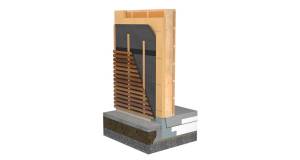 Tackling UK carbon emissions with Passive Ecowall
Tackling UK carbon emissions with Passive Ecowall -
 Planning guidance to cut carbon emissions previewed at IGBC conference
Planning guidance to cut carbon emissions previewed at IGBC conference -
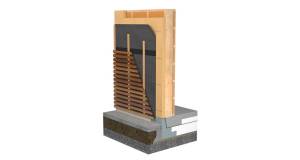 Tackling carbon emissions with Passive EcoWall
Tackling carbon emissions with Passive EcoWall -
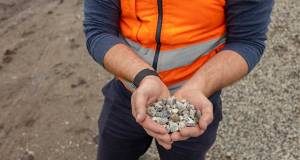 Recycled aggregate cuts carbon emissions by 95 per cent, EPD shows
Recycled aggregate cuts carbon emissions by 95 per cent, EPD shows -
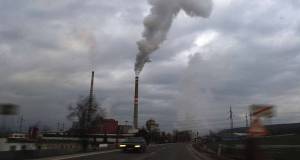 Ireland’s emissions continue to exceed carbon budget — EPA
Ireland’s emissions continue to exceed carbon budget — EPA -
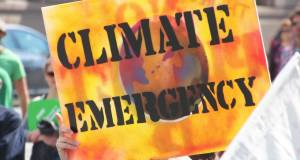 Ireland's climate action plan: just business as usual?
Ireland's climate action plan: just business as usual? -
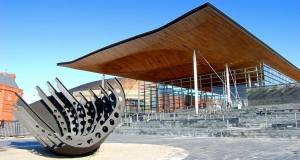 Wales votes to cut emissions 80%
Wales votes to cut emissions 80% -
 The slow, heavy gears of deep retrofit start to turn
The slow, heavy gears of deep retrofit start to turn -
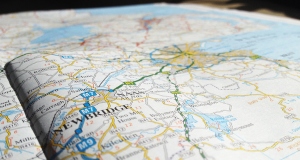 Ireland’s energy roadmap — have your say
Ireland’s energy roadmap — have your say -
Opinion
-
Thermal bridging
-
Isover awards

